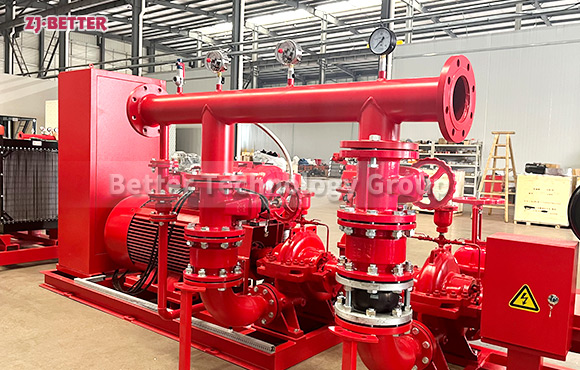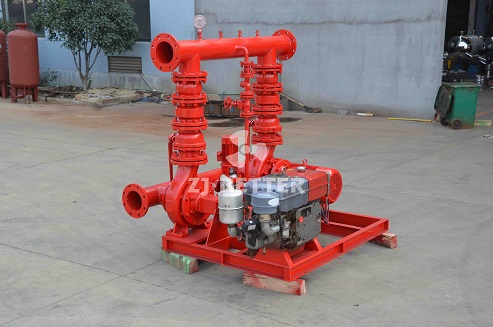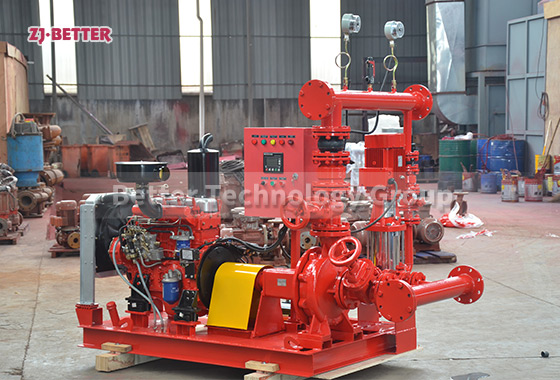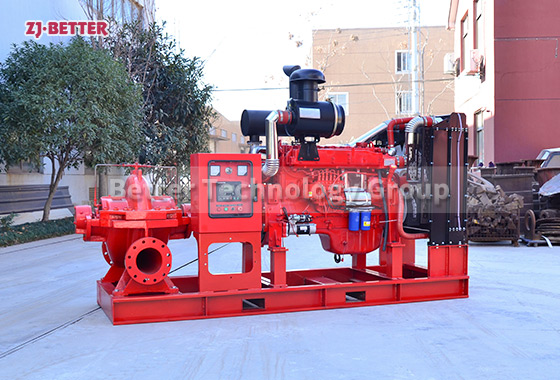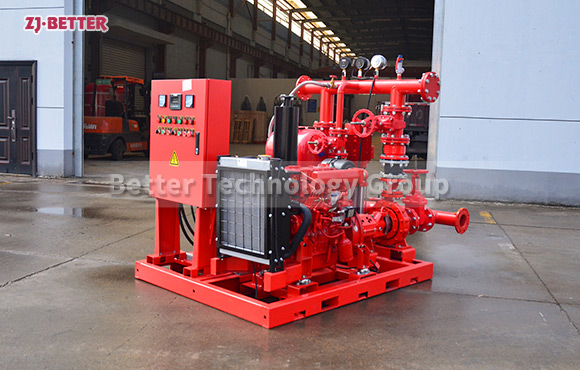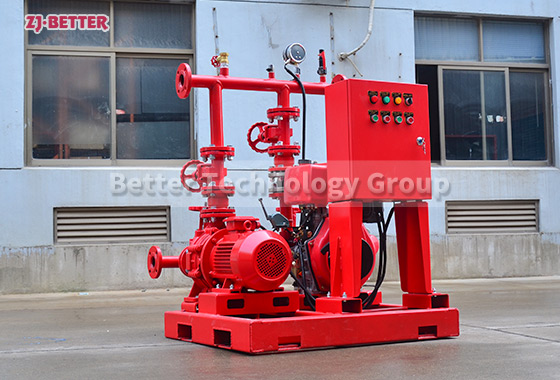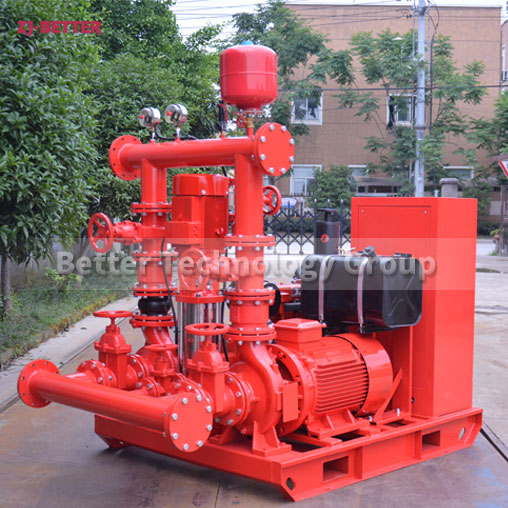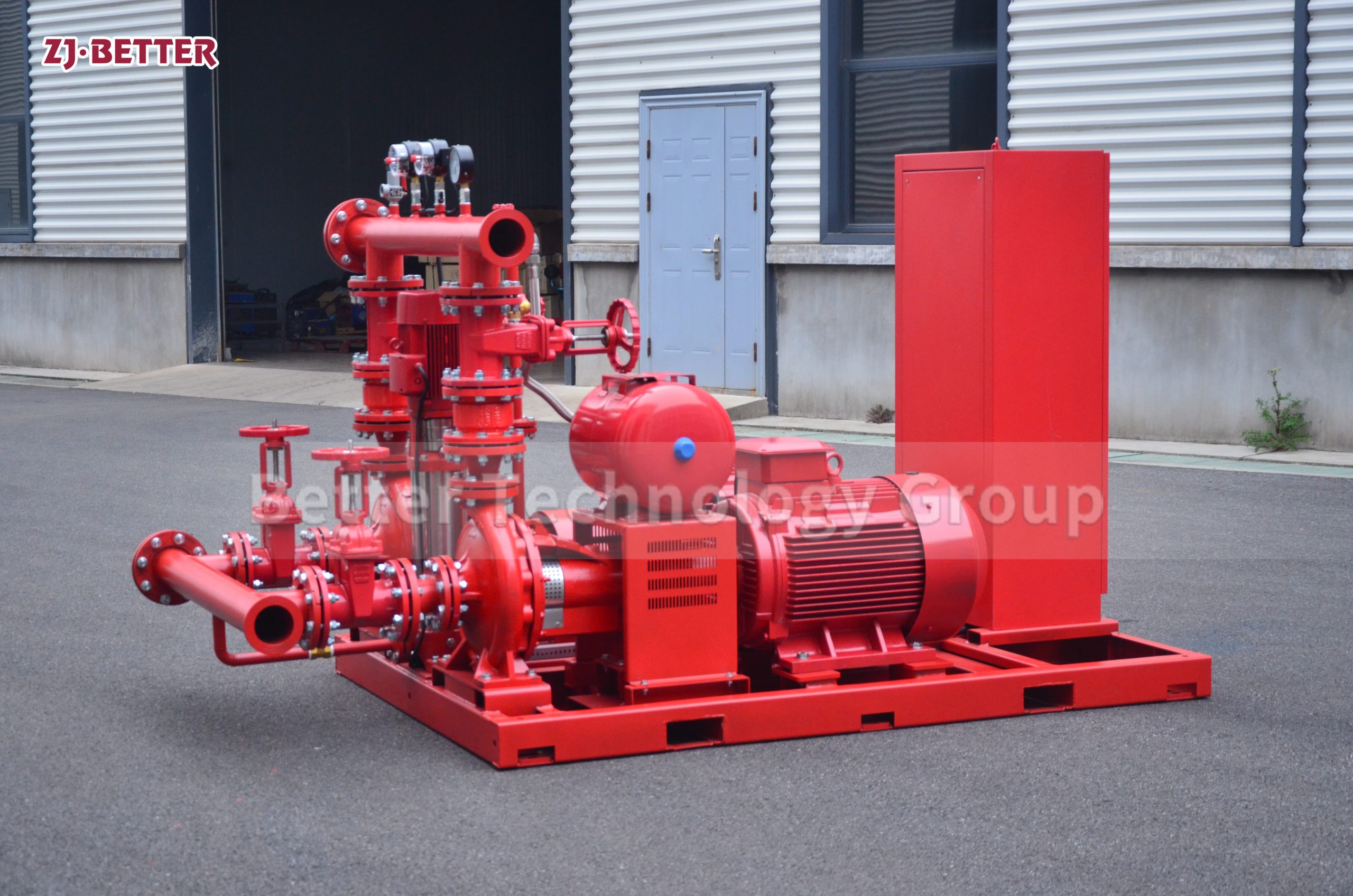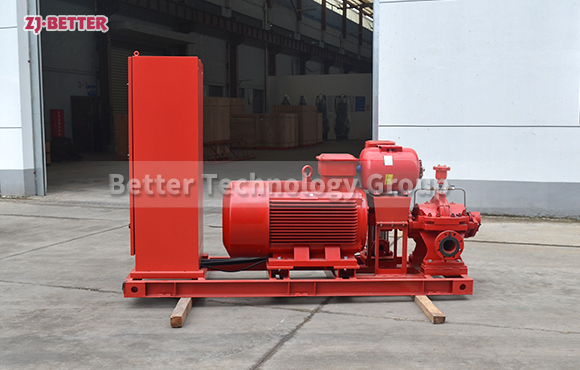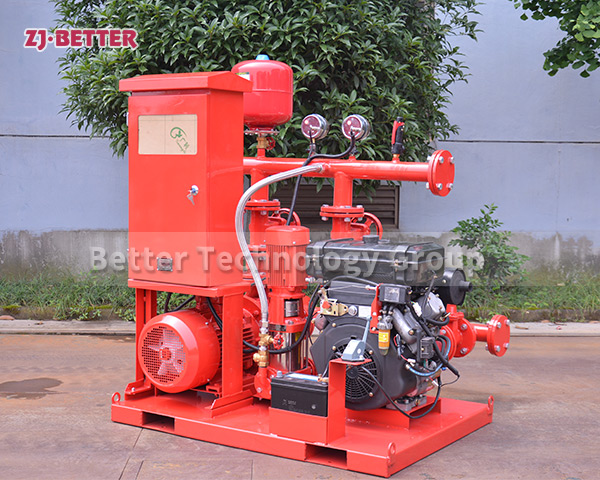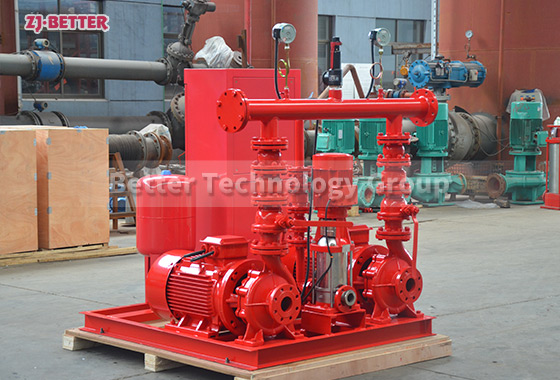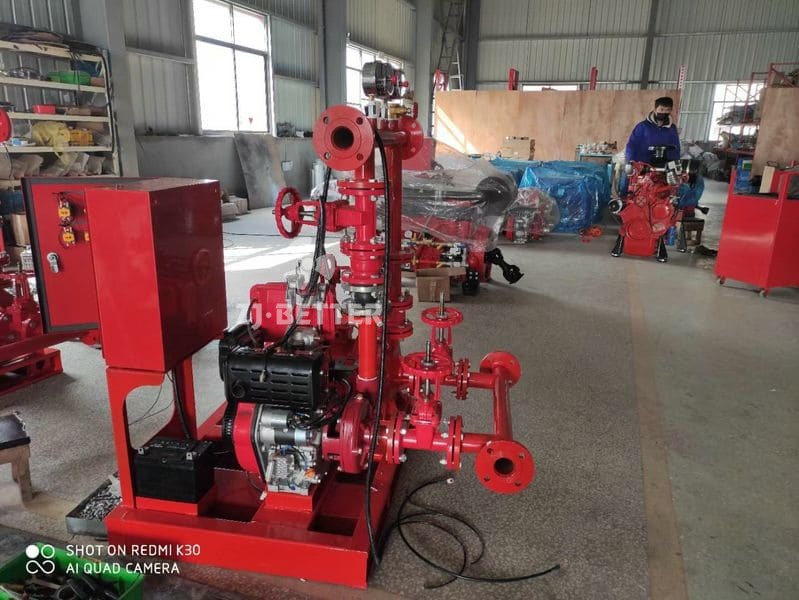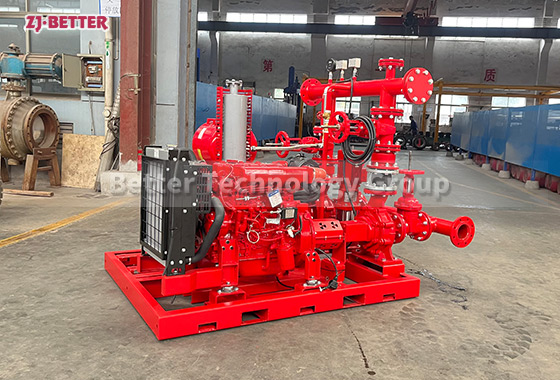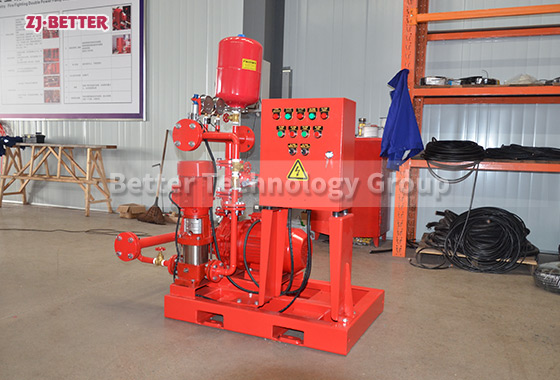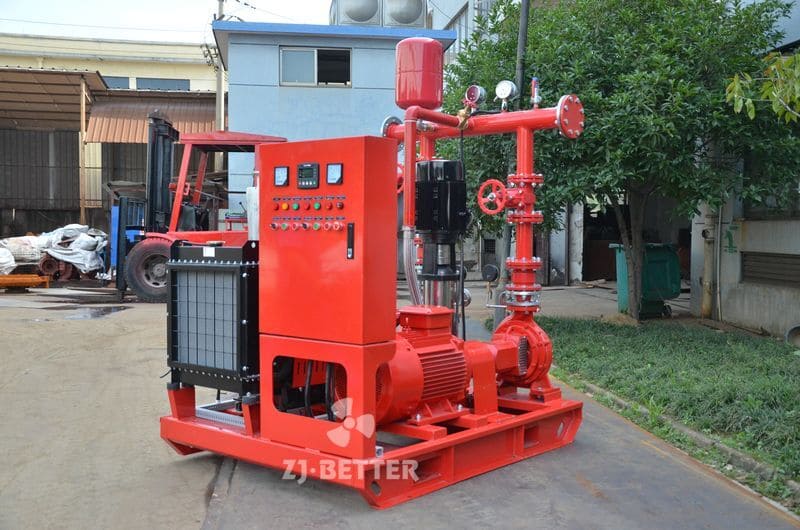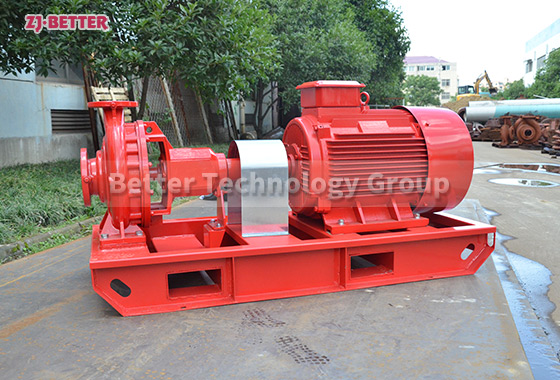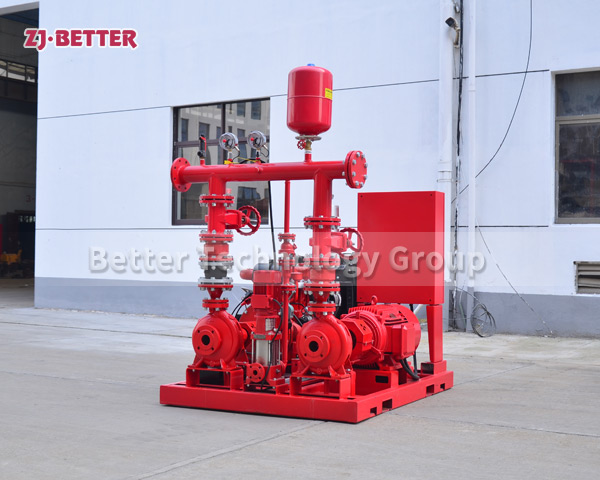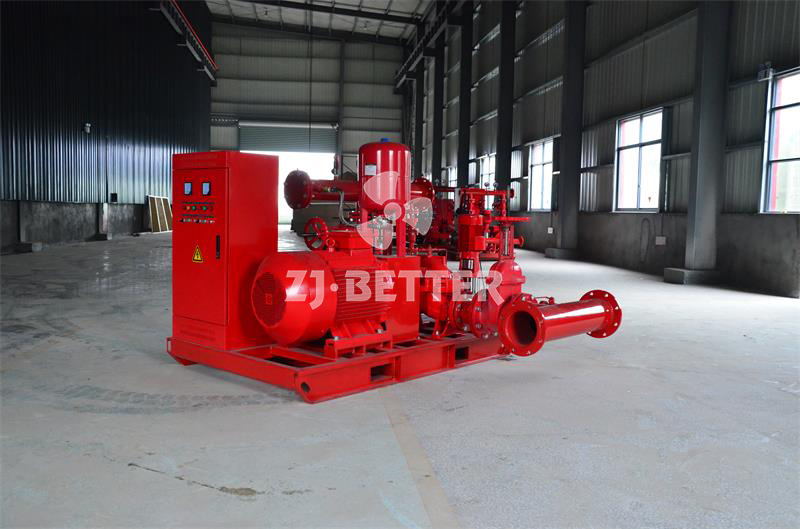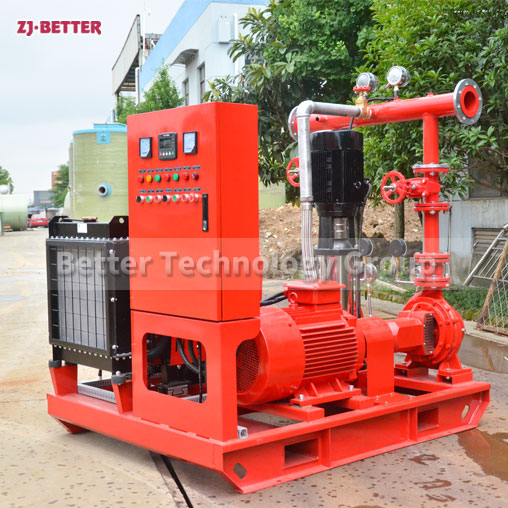Enhanced Safety with outdoor fire pump set
1.Flow:30-9000 GPM
2.Head: 3-20 Bar 40-300 psi
3.Power:Diesel & Electric Pump:1.5-710kw Jockey Pump:0.55-160kw
4.Speed:740-2900 r/min
The outdoor fire pump set is designed to enhance fire safety in various applications. From powering fire hydrants and stabilizing sprinkler systems to safeguarding residential areas, industrial buildings, and high-risk environments, the Outdoor Fire Pump Set delivers optimal performance and unmatched reliability.
Types of pumps used for fire service include: End Suction Pump, Split Case Pump, Vertical Inline Pump and Vertical Turbine Pump.
1. Electric motor driven pump, can use single stage pump, horizontal split case pump, end suction pump,multistage pump.
2.Diesel engine pump, with capacity and head equal to electric pump, with fuel tank, water tank, fan,control box.
3. Jockey pump, horizontal or vertical, capacity will be small, but head should be higher than electric anddiesel engine pump.
4. Control panel: Auto Control of electric pump, diesel engine pump and Jockey Pump with overload, overcurrent protection.


